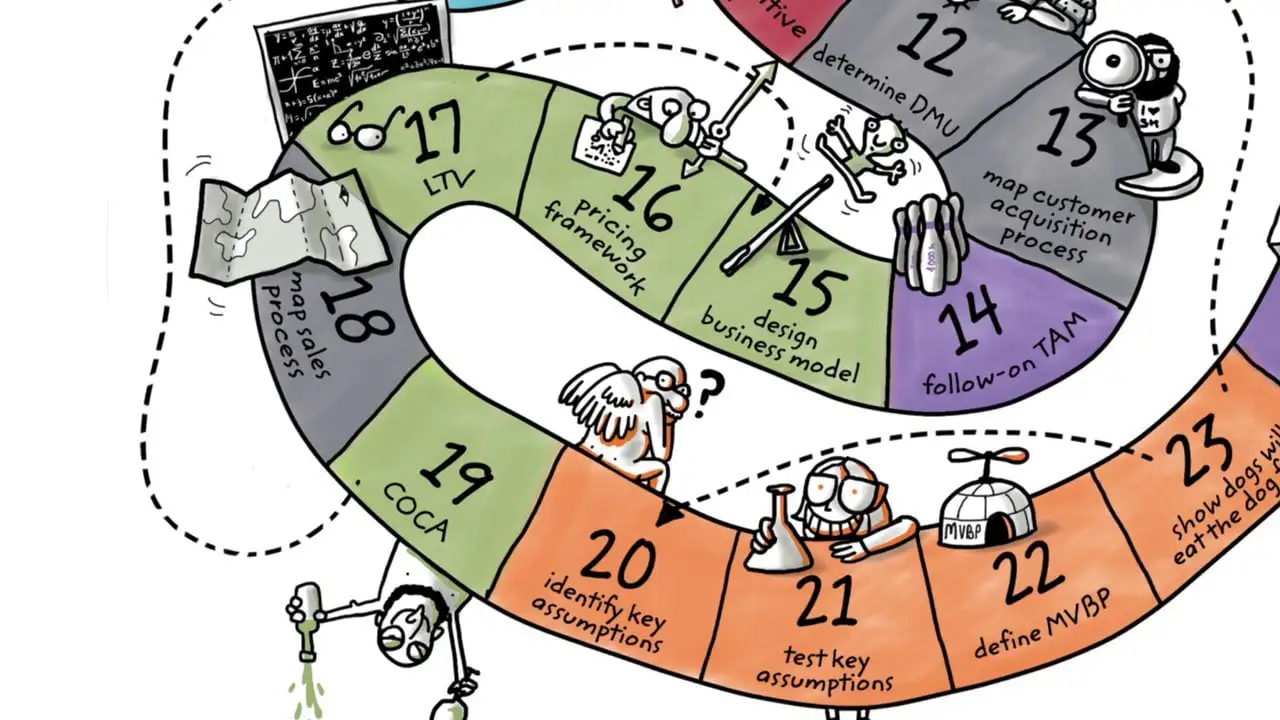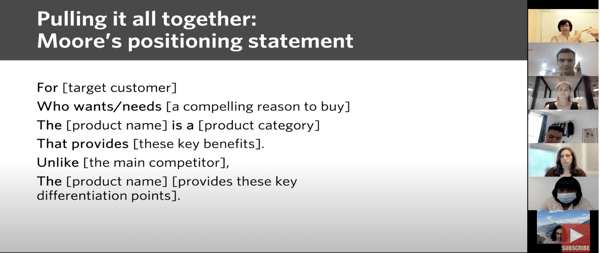
Startup positioning and hypothesis testing
Elaine Chen, Director of the Derby Entrepreneurship Center at Tufts University, teaches BonBillo teams how to apply 'Disciplined Entrepreneurship' to define their value proposition, competitive positioning and test key assumptions.
Highlights of Startup positioning and hypothesis testing workshop
The Customer Journey Map
Elaine helps our teams with their customer journey maps to understand how customers identify their needs, evaluate options, purchase the product that best fits their needs and ultimately become a champion of your product.
She shares that it's important to understand the customer's perspective and how they think about the problem.
How to express your startup value proposition?
Elaine states "describing how a product works is almost never the problem. Describing what the value proposition is, that is often a problem."
When you're selling B2B there are two common ways people think about value. Usually you're either saving your client money or time or you're helping them make more money. She uses one of the robots she built as an example. A manufacturing company was losing out on business, because they couldn't find people to do the jobs and had to turn away projects. If they hired a robot at $30,000 to do those jobs, the robot would pay for itself within 4 months by enabling to service those projects. The person already working on the manufacturing line would become a robot supervisor, they'd get a better job and the robot is going to help make the manufacturing company more money.
In order to express the value proposition to your customers, you need to understand what drives them. In some cases it's very transactional - about saving money, saving time.
Whereas with luxury products you're appealing to people's emotional way of expressing themselves. Elaine uses the example of her friend who picked a Prius over a Kia. Although the Prius is more expensive, her friend went ahead with the purchase because it was her expression of affinity to climate justice and fit her self-image.
What is the core of a startup?
Your core is the that thing that makes you unbeatable and will be difficult to copy. It's what's special about your team and your venture.
Elaine uses Zappos as an example to illustrate the core of a company. Zappos is well known for being obsessed about providing excellent customer service. By being true to their core, Zappos illustrated their customer obsession even on customer service calls not related to their own products, leading to great PR.
When you think of your company and your core, you want to think about what it is that you have that nobody else has and that will be different for every startup.
What is the competitive advantage of a startup?
Elaine states "what you want to do when you think about the competitive advantage of your solution is to think about the customer's top two priorities. Not the top two things your company does well, that doesn't matter to the customer. What matters to them is their problem and how you can solve it."
The best way to pull it all together in a succinct way is through Jeffrey Moore's positioning statement. The positioning statement is a guide that keeps your team aligned, forces you to have clarity and be clear about who it is that you serve. It also helps you to identify the customer, understand their problem and explain your solution and the benefits in a way that is relevant to them.
"It's never enough to be different, you have to be different and better because otherwise you're not going to cause your customers to change their minds."

Testing your startup hypothesis
Elaine helps our startup teams formulate their hypothesis. She explains that a hypothesis is anything you believe is true, but you don't know for sure.
She suggests using the hypothesis phrase - "I can get that potential customer to do this action, because this is the problem that they need to solve." If you phrase it in this way, then you can define some kind of experiment to see if you can get potential customers to do the relevant action.
You want to take your hypothesis and break it down into components and figure out how to unbundle it. The minimum viable product for the purposes of the test is the smallest thing you can make, which in a lot of cases is a landing page. Elaine uses the example of creating a landing page for a pre-college camp for high school students who are visiting a university to see whether they want to study there. She shares that in order to test whether there is purchase interest in this program she would add the call to action - "signup for a webinar". In order to test for interest she would send the landing page to high school students to see if anybody signs up for the webinar. In this example the currency of the test would be a sign up and that's an email.
Elaine shares that when you're testing your hypothesis to ask "what can I test in the next hour that will give me data that changes what I'm going to do two hours from the next hour." You want to be able to run as many experiments as possible so that you learn the most. So the shorter the experiment, the faster the turnaround, the more you'll learn and the faster you're going to get you an optimal outcome.
She highlights that the ultimate test is getting paid. Having something to sell and having people who are willing to pay for that is the last step in hypothesis testing.
Follow Elaine's journey:
https://www.linkedin.com/in/elaineychen/
https://twitter.com/chenelaine
